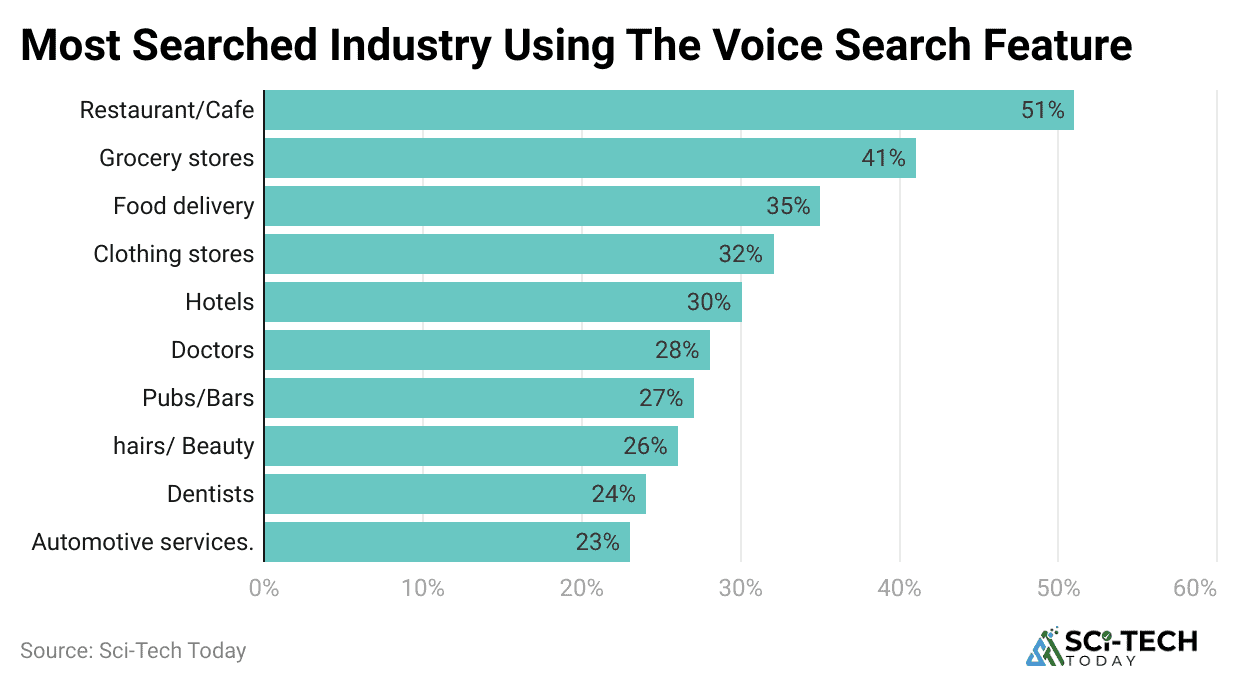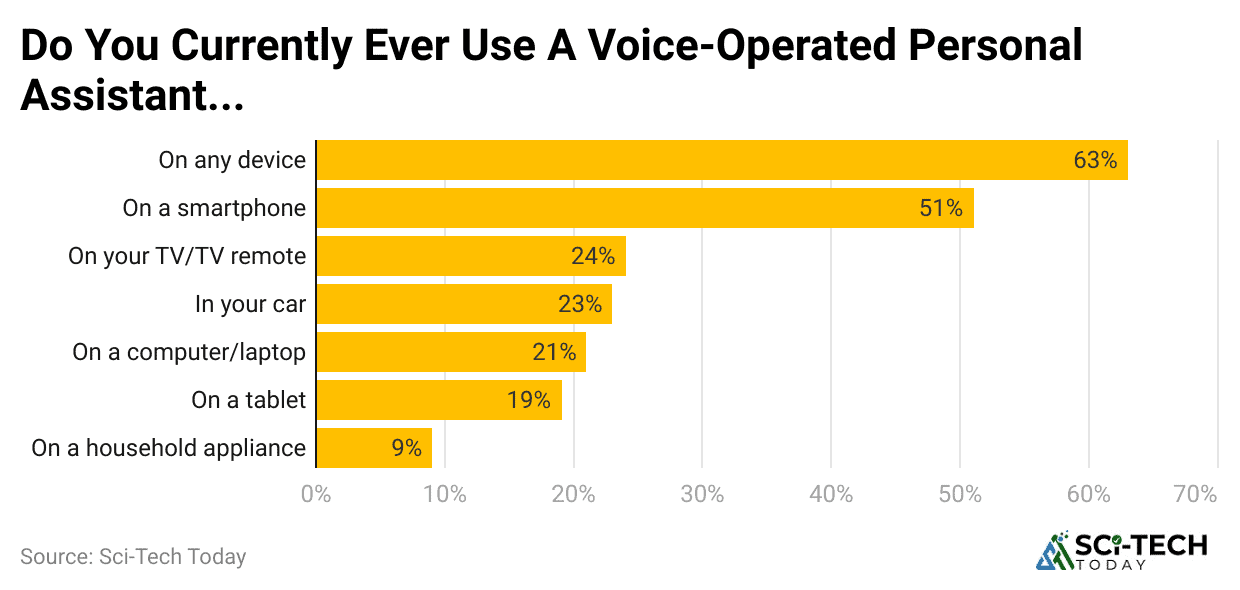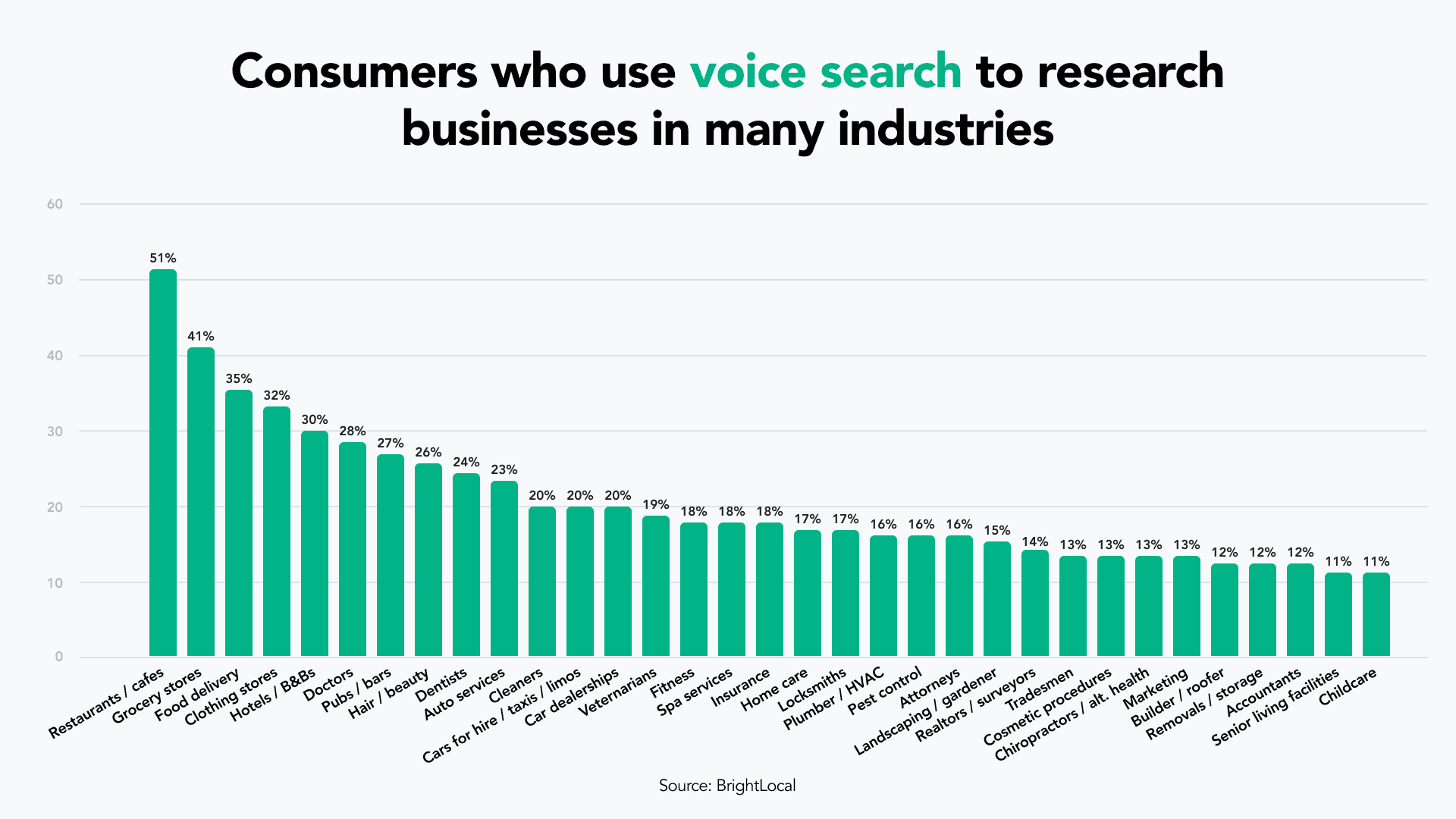Voice Search Statistics By Market Size and Facts (2025)

Updated · Nov 20, 2025


WHAT WE HAVE ON THIS PAGE
Introduction
Voice Search Statistics: Voice search has rapidly become a core method of digital interaction, driven by the ubiquitous presence of smart devices like smartphones, smart speakers, and integrated virtual assistants.
As consumers increasingly opt for spoken commands over manual typing, understanding the latest voice search statistics is essential for any business aiming to maintain digital relevance.
So, this comprehensive report dives deep into the most current voice search statistics for 2025 and future outlook, providing the insights needed to adapt content strategies and adopt the immense commercial potential of the voice-first revolution. So, let’s get started.
Editor’s Choice
- The global penetration of voice search has solidified, with approximately 5% of the total worldwide internet-using population now actively engaging with voice commands to initiate online searches.
- The total number of digital voice assistant devices, including smart speakers, smartphones, and in-car systems, is projected to reach a colossal 4 billion units in use globally by the end of 2024.
- In the substantial United States market, the user base for voice assistants is forecast to reach 5 million by 2025.
- The overall search volume generated by this technology is immense, with more than 1 billion voice searches conducted each month.
- The technology’s reliability is high, as voice search assistants achieve an impressive accuracy rate, correctly answering an average of 7% of all user queries.
- Local intent overwhelmingly drives usage, with a massive 76% of all voice searches focusing on local or near me information.
- The speed of result delivery is a key competitive advantage, as the average page load time for a top voice search result is an exceptionally fast 6 seconds.
- The commercial impact is profound, with the projected global spending in voice-driven shopping, or v-commerce, expected to skyrocket to approximately $82 billion by the year 2025.
- For search engine optimization SEO, achieving Featured Snippet placement is vital, as 7% of the answers delivered by voice assistants are sourced directly from this Position Zero block.
- Consumer preference is shifting definitively toward ease of use, with 71% of users reporting they prefer the convenience and speed of voice search queries over manually typing their requests.
- Voice shopping is already generating significant value, with global voice-assistant-driven purchases on smart devices totalling $164 billion in transaction value.
- The number of people issuing voice commands is substantial, as roughly 25 billion people worldwide currently use some form of voice-activated assistant or search capability regularly.
Voice Search Market Size

According to Market.us, the market for the underlying technology, virtual assistants and speech recognition, is experiencing explosive financial growth. These voice search capture the market’s value, the key players, and the consumer satisfaction driving this forward momentum.
- The global market for speech and voice recognition is predicted to grow substantially, expanding from an estimated $17 billion in 2023 to around $83 billion by 2032, a massive compounding annual growth rate of 20%.
- The number of digital voice assistants in use worldwide reached an extraordinary 8.4 billion by the end of 2024, a figure that is more than double the 4.2 billion recorded just four years earlier in 2020.
- In the U.S. market, Google Assistant is the leader with approximately 88.8 million active users, closely followed by Apple’s Siri, which commands a strong user base of 86.5 million individuals.
- Amazon’s Alexa remains a dominant force in the smart speaker segment, with 67% of U.S. smart speaker owners reporting that they use an Amazon Echo device.
- Consumer satisfaction with voice assistants is exceptionally high, with 93% of users reporting overall satisfaction.
- The average accuracy rate for correctly answering search queries across all major voice assistants is impressive, standing at 93.7%.
- Google Assistant often leads in accuracy tests, having demonstrated a capability to correctly answer around 92.9% of the questions posed to it in recent controlled digital assistant IQ tests.
- The voice assistant application market itself was valued at $3.53 billion in 2022 and is projected to expand at a powerful compound annual growth rate of 28.7% from 2023 through 2029.
|
Category |
Market and Tech |
| Speech Recognition Value |
The market is expected to hit $83 billion by 2032. |
|
Global Device Count |
8.4 billion voice assistants in use globally. |
| US Market Leader |
Google Assistant leads with 88.8 million US users. |
|
Smart Speaker Share |
67% of US owners use an Amazon Echo Alexa. |
| User Satisfaction |
93% of consumers are satisfied with voice assistants. |
|
Average Accuracy |
Voice assistants answer 93.7% of queries correctly. |
| Growth Rate |
The application market growth rate is 28.7% CAGR. |
Voice Search Usage Adoption

- Globally, approximately 20.5% of people who use the internet now actively engage with voice search.
- The overall volume of queries is, with over 1 billion voice searches being executed every single month.
- In the United States, the number of individuals using voice assistants is expected to reach 153.5 million in 2025, which represents a stable year-over-year increase of about 2.5%.
- A significant portion of the adult population in the U.S., specifically 41%, reports using voice search daily.
- Younger demographics are particularly heavy users, with 65% of people aged 25 to 49 utilizing their voice assistants at least once a day.
- Smartphones remain the dominant platform, with 56% of users relying on their mobile device for voice search to find information about brands or conduct quick.
- Cultural adoption varies, with China showing the highest weekly usage, as 39.3% of its internet users engage with voice assistants weekly, compared to roughly 30% globally.
- About 21% of the general population has made weekly voice search a regular, entrenched habit in their daily lives.
- Over 70% of internet users express a preference for voice search due to its speed and hands-free convenience.
- The average response given by a voice assistant is notably concise, containing only about 29 words.
| Category | Usage |
| Global Penetration |
20.5% of internet users employ voice search. |
|
U.S. User Base 2025 |
153.5 million voice assistant users in the US. |
| Daily Use |
41% of US adults use voice search daily. |
|
High-Frequency Users |
65% of 25 to 49-year-olds use a voice assistant at least once daily. |
| Mobile Dominance |
56% of voice search is conducted on smartphones. |
|
Weekly Habit |
21% of users perform voice searches weekly. |
| Average Answer Length |
Voice search results average 29 words in length. |
Voice Shopping

- Global voice-driven commerce is projected to reach an eye-watering $82 billion by 2025, highlighting a rapid.
- A significant 35% of U.S. adults are not yet making purchases via voice but have expressed a clear interest in trying voice shopping.
- The initial point of entry for v-commerce is research, with 51% of individuals who use voice for shopping primarily using it to look up product information before committing to a purchase.
- For services, convenience reigns supreme: 54% of voice search users have successfully used the feature to secure a restaurant reservation.
- Takeout and quick-service purchases are highly popular, as 34% of consumers have utilized voice search to place food orders.
- The total transaction value for purchases driven by voice assistants on smart devices globally has already climbed to $164 billion.
- Among smart speaker owners, 22% in the U.S. have already completed at least one purchase using their device.
- Brands should recognize the desire for deals, as 52% of voice-activated speaker owners are interested in receiving tailored promotions and sales information directly from brands.
- For local businesses, voice search is already a conversion powerhouse, with 18% of local voice searches made on a smartphone leading directly to a purchase on the same day.
| Category | V-Commerce |
| 2025 Projected Value | Global voice shopping spend to hit $82 billion. |
| Latent Interest | 35% of US adults are interested in voice shopping adoption. |
| Primary Use | 51% of voice buyers use it for initial product research. |
| Restaurant Reservations | 54% of users employ voice search to book a table. |
| Food Orders | 34% of consumers have placed food orders using voice. |
| Voice Buyers | 22% of U.S. smart speaker owners have made a purchase. |
| Conversion Rate | 18% of local mobile voice searches lead to same-day purchase. |
Voice Search for Businesses

- An overwhelming 76% of all voice searches possess local intent, meaning the user is looking for a nearby business, product, or service.
- Mobile voice searches are intrinsically local, being approximately three times more likely to target local information compared to traditional text-based queries on a mobile device.
- The convenience of voice drives instant action: 58% of consumers utilize voice search to discover and find information on local businesses.
- In the restaurant sector, the adoption is highest, with 51% of voice search users specifically researching restaurants and cafes.
- A stunning 88% of individuals who perform a local search on their phone will either visit or call the related store within just 24 hours.
- The loyalty of smart speaker owners to local search is high: 76% of smart speaker users conduct voice searches for local information at least once a week.
- Positive online reviews are directly tied to voice conversion; 27% of users visit a local business’s website immediately after completing a voice search.
- For drivers, in-car voice systems are essential, as 62% of people use voice search to find local businesses or services while they are behind the wheel.
- Due to the high local intent, local content is a substantial category, making up 22% of all voice search queries.
- Beyond restaurants, popular local business searches include grocery stores at 41% and food delivery services at 35% of all local voice queries.
| Category | Local Search |
| Local Intent Share | 76% of all voice searches are location-based. |
| Mobile Local Search Multiplier | Mobile voice searches are 3x more likely to be local than text searches. |
| High-Intent Follow-Up | 88% of local searchers visit or call a store within a day. |
| Top Industry | 51% of users research restaurants using voice search. |
| Smart Speaker Local Use | 76% of smart speaker owners search for local info weekly. |
| In-Car Use | 62% of people use voice search for local information while driving. |
| Conversion Catalyst | 27% of users visit a website after a local voice search. |
Voice Search for Optimization

- The average page load time for a top voice search result is incredibly fast, clocking in at only 4.6 seconds, which is an average of 52% faster than a standard search result page load time.
- A significant 40.7% of all answers delivered by voice assistants are sourced directly from the Featured Snippet box.
- 80% of the content that Google’s voice assistant reads aloud is sourced from one of the top three organic search results.
- The content favored by voice search is typically long-form, with the average voice search result page containing a substantial 2,312 words.
- To appeal to the natural language processing of assistants, the content is generally written at an accessible, conversational level, specifically a 9th-grade reading level.
- The average voice query is notably longer and more conversational than a traditional text query, measuring approximately 29 words in length.
- Websites that rank well in voice search are overwhelmingly secured, with 70.4% of voice search result URLs utilizing the HTTPS protocol, compared to only about 50% of traditional desktop results.
- Social popularity remains a strong indicator of trust, with the average voice search result page boasting a high social share count, including 1,199 Facebook shares and 44 X formerly Twitter shares.
- Domain Authority is a major factor, with the average domain rating for a page that surfaces in a voice search result being a high 76.8 out of 100.
| Category | SEO |
| Load Speed | Average load time is 4.6 seconds 52% faster. |
| Featured Snippet Share | 40.7% of answers come from the Featured Snippet. |
| Top Ranking Reliance | 80% of answers come from the top 3 organic results. |
| Content Length | Average content length for a voice result is 2,312 words. |
| Reading Level | Content is typically written at a 9th-grade reading level. |
| Query Length | The average voice search query is 29 words long. |
| Security Factor | 70.4% of voice results use HTTPS. |
| Domain Authority | Average Domain Rating is 76.8. |
Conclusion
Overall, these data confirm that voice search has become a significant change in the digital ecosystem. From over 1 billion monthly searches to a projected $82 billion in voice-driven commerce by 2025, the numbers give us a clear picture of a market that is rapidly maturing and integrating into daily life.
So, the clear alignment between voice search and high-intent, local queries means that businesses must move beyond simple SEO measures. So, I hope you like this piece of content. I have analysed the most up-to-date data and information to present you with this article. If you have any questions, kindly let us know. Thanks for staying up till the end.
Sources
FAQ.
The global adoption of voice search is firmly in the mainstream. Approximately 20.5% of all internet users worldwide now engage with voice search technology on a regular basis. This translates to billions of people, cementing its role as a fundamental method of digital interaction across the globe.
The saturation of voice devices is extraordinary. As of the latest data, the total number of active digital voice assistant units, which includes smart speakers, smartphones, and other voice-enabled devices, has surpassed the human population, reaching an estimated 8.4 billion units worldwide. This figure underscores the prevalence of multiple voice-enabled devices per user.
The voice commerce market is experiencing explosive growth. While market projections vary, the global voice commerce market was valued at tens of billions in 2023 and is widely projected to reach around $82 billion to over $286 billion by 2033, with a Compound Annual Growth Rate CAGR often exceeding 23%. This massive growth is driven by the convenience of hands-free shopping.
Local intent is the primary driver of voice search. An overwhelming 76% of all voice searches are specifically related to local information, such as finding nearby restaurants, stores, or service providers near me queries. This makes local SEO a critical factor for businesses optimizing for voice.
Voice search results have distinct technical requirements, focusing on speed and conversational tone:
- The average page load time for a top voice search result is extremely fast, clocking in at just 4.6 seconds, which is about 52% faster than the average traditional search result.
- A high percentage, specifically 40.7%, of all voice answers are directly sourced from a Google Featured Snippet, making Position Zero the most valuable real estate for voice.
- The content should be conversational, typically written at an accessible 9th-grade reading level, and the answers are brief, averaging only 29 words in length.
The major voice assistants, such as Google Assistant, Amazon Alexa, and Apple Siri, boast a high degree of accuracy. The overall average accuracy rate for correctly answering a wide range of search queries is approximately 93.7%, a key factor that builds consumer trust and encourages daily reliance.
Yes, consumer satisfaction and preference are very high.
- 93% of users report being generally satisfied with their voice assistant experience.
- A significant 71% of consumers state they prefer using voice search over typing in their queries due to the speed and hands-free convenience it offers.
The most active daily users of voice search belong to the middle-aged demographic. Approximately 65% of people aged 25 to 49 report speaking to their voice-enabled devices at least once per day, though younger demographics 18 to 24 were instrumental in driving the initial high adoption rates.

Barry is a technology enthusiast with a passion for in-depth research on various technological topics. He meticulously gathers comprehensive statistics and facts to assist users. Barry's primary interest lies in understanding the intricacies of software and creating content that highlights its value. When not evaluating applications or programs, Barry enjoys experimenting with new healthy recipes, practicing yoga, meditating, or taking nature walks with his child.








